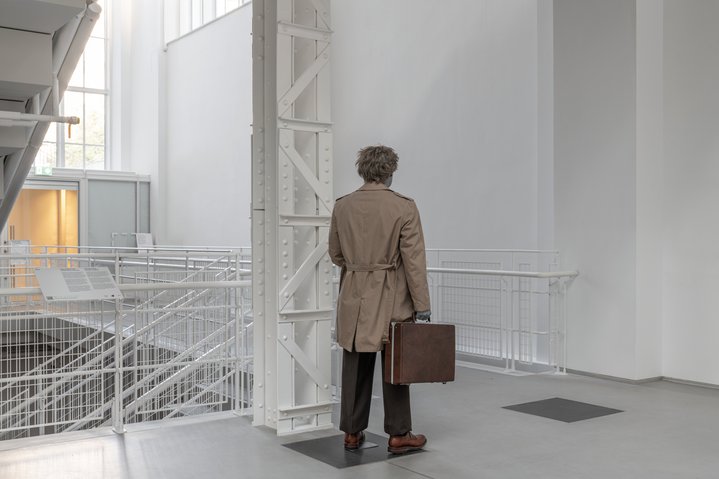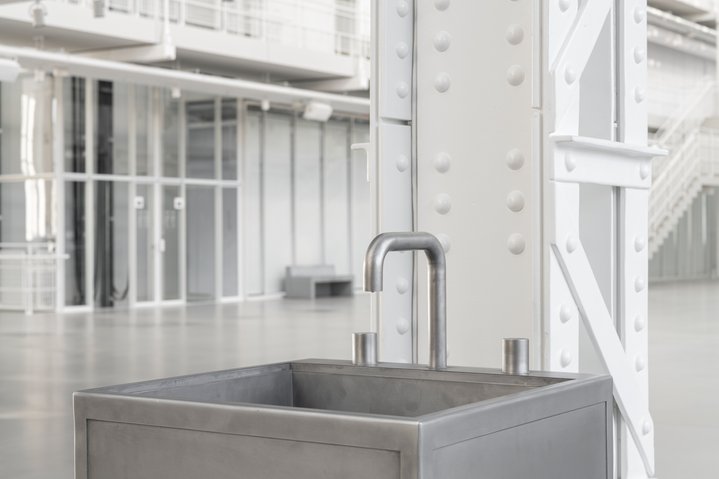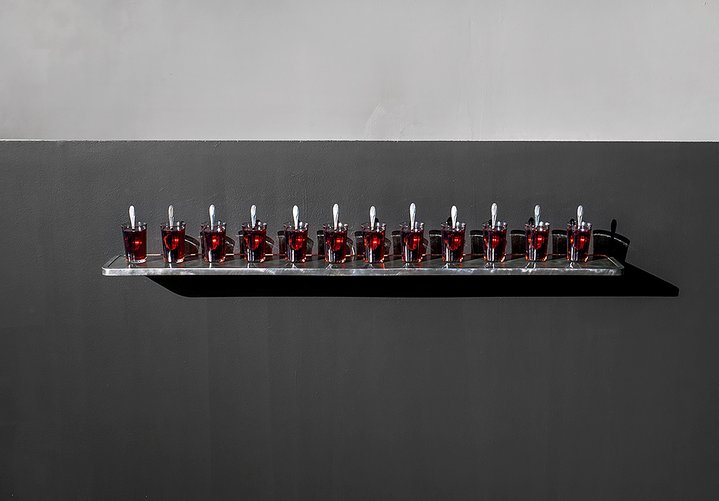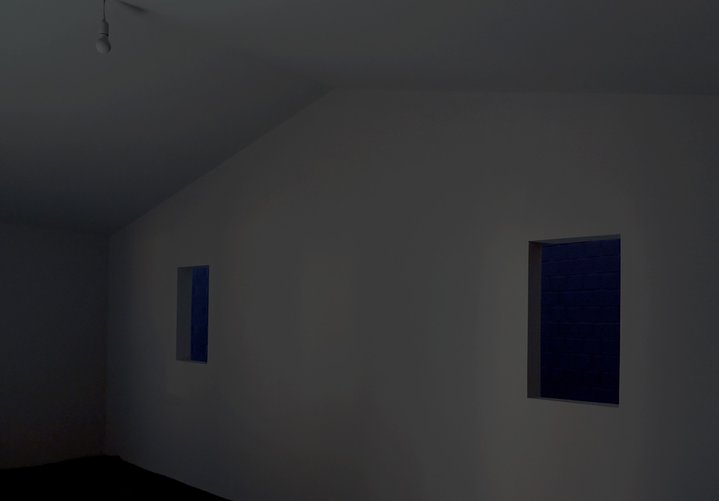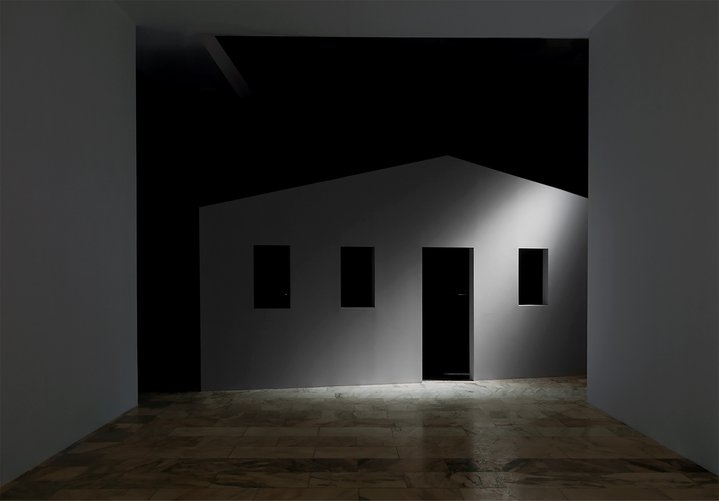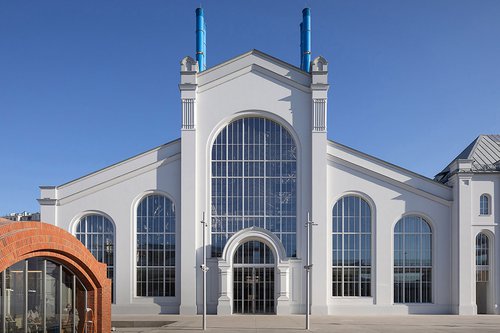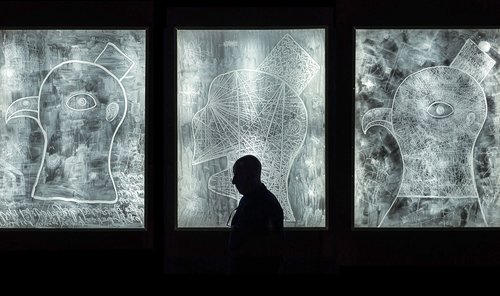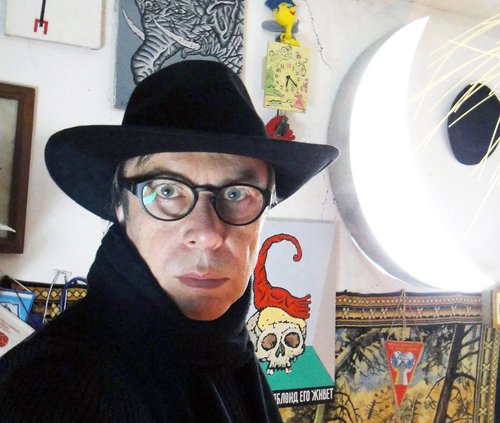Korsi. Room, 2022. Irresistible forces. GES-2 House of Culture, Moscow. Photo: Daniil Annenkov © GES-2 House of Culture
Korsi — the everyday nightmares of a Russian artist
Young Moscow-based artist Korsi has created an ambitious series of new works for the huge central hall in GES-2, a former power plant converted into a contemporary art space by Italian architect Renzo Piano. Bringing life into this bold architectural environment is not for the faint-hearted.
‘Irresistible Forces’ by Korsi (b. 1986) at ‘GES-2. Prospect’ is the inaugural show of a new exhibitions programme. It has twin aims, firstly, it exists to support and promote Russian artists, and secondly, its role is to boost the use of the House of Culture itself. The first quickly became a necessity in the wake of the events of 24th February 2022 with the immediate end stop of any influx of art or artists from abroad. The second goal relates to the sheer scale of this building and in particular the unique challenge to fill the vast empty central nave of GES-2, with art. Called ‘The Prospect’ – or Avenue – it is a vast, empty 26,000 cubic square metre expanse.
It is probably better to call ‘Irresistible Forces’ a project rather than an exhibition. The Prospect has all the qualities of a public space rather than a functioning exhibition hall. As Korsi, who received his first degree in architecture at the Moscow Architectural Institute, explains, ‘It's more a venue for public art…As someone with an architectural background, I am impressed by the space. I'm not afraid of big, powerful spaces, which in certain circumstances could crush a work’.
Korsi spread his seven art objects and installations out evenly along the 100-metre-long Prospect (you can find an eighth work in another wing of the building). All these disparate parts are extremely diverse and at first glance it is impossible to see what unifies them. For instance, in ‘Bench’ a heated concrete bench has been set up along the wall, which creates a contrast with the cool autumn sun, no longer able to heat anything up. At the opposite end of Prospect stands ‘Scene’, the life-size figure of a distressed 40-something man, in a mackintosh with a suitcase, his skin has turned bluish grey. His face betrays a pained smile as he holds out a transport ticket. In ‘Drop’, next to one of the columns there is a large, simple, metal sink into which a trickle of water periodically drops making an audible splash. ‘Room’ is the largest installation which comprises two symmetrically arranged domestic interiors without walls, punctuated with a scattering of objects and furniture. In ‘Street Light’ there is a fragment of the city made from cement, sitting on the floor. There are street curbs, there is grass, part of a tree trunk, all lit in the typical yellow glow from artificial street lighting, with shadows cast from leaves. Down one of the smaller lanes leading off the main Prospect there is ‘Window’, a large box with a room of glazed glass. ‘Control Panel’ looks like an office, styled like a Gothic cathedral.
In the explanatory text to his project the artist refers to French psychoanalyst Jacques Lacan, explaining he wants to show the ‘frightening yet seductive underbelly’ behind everyday things. ‘I work in a genre with a very subtle, neurotic, melancholic kind of horror, forcing you into a complex set of feelings and reflections,” explains Korsi. ‘Someone on Instagram captioned a photo of my project in GES-2 as ‘Not bad, but also creepy’. I am happy about this description.
For its extreme naturalism, which borders on hyperrealism, coupled with the figurative appeal of a designer, the artist's works seem close to those of Scandinavian artists Elmgreen and Dragset. Like them, his projects have strong Instagram appeal and people often take photos of his work. Yet Korsi’s work has more an underlying sense of nightmare than irony. So, he injects anxiety into social media as if a casual user.
For his video piece ‘Smile’ in the book shop, which shows the lower half of a woman’s face, the artist went through and rejected around seven thousand photographs of models. Even though it was filmed and edited for the exhibition, it is the oldest work here. The artist conceived it when he was finishing his studies at the Rodchenko School in Moscow, almost nine years ago. ‘When I was asked to do something for GES-2,’ says Korsi, ‘I took out one of the notebooks where I have been jotting down my thoughts for the past 15 years, and I put together a proposal for the exhibition from the ideas with which I was now have most sympathy. I came up with some of the projects a long time ago: the newest was conceived just before the pandemic and the oldest is from my notes which date back to 2013. I have a somewhat strange relationship with time and what is relevant. Overall, I respect the ideas I come up with and feel responsible for them, I don't throw anything away.’
Korsi sees a synergy between his approach and the music industry. ‘My art strategy is built around composing and producing singles. All my projects are tight, complete and very diverse. But despite the apparent diversity of the objects and installations, in the end they are all directed towards the same ultimate meaning.’
The projects he did last year, for example, form a kind of trilogy. The series ‘The Machine of Meaning’ and ‘The Machine of Order’, shown together in the same exhibition at Moscow’s Artwin Gallery, are a set of carefully cut, shiny metal parts with lots of holes and curves, yet their use remains unknown. Another work last year, ‘The Empty House’, was shown in Tyumen, at a special project of the VIth Ural Biennale. This consisted of the wall of a building, with a gap between the windows and the entrance. The whole construction was in semi-darkness, which created the sensation of falling on the edge of reality and hallucination, a twilight state the artist explores. All three projects in 2021challenged us to think about the nature of human perception.
In 2019, Korsi created probably his most famous work, an audio installation in a crematorium in Nizhny Novgorod where it is still installed and working. There is a large speaker in a wooden case in the crematorium’s garden, created by the artist with Nizhny Novgorod based artist Artem Filatov (b. 1991), and the work formed part of Filatov’s site-specific project ‘Garden named after…’. The audio is switched on for visitors and the resulting patter of sounds reminiscent of a solemn religious hymn is in fact an endless recital of the Latin names of various human organs and body parts.
The installation ‘Affective Synchronization’ conceived in 2018 consists of twelve identical faceted glasses, standing in a row on a metal shelf. The tea is epoxy resin somehow magically held in suspense from the spoon without reaching the bottom of the glass. In Soviet and post-Soviet visual culture, especially the cinema, the image of a glass with a spoon (this constellation of objects often produced tinkling sounds) acted as a euphemism for some dramatic or even tragic event in the lives of the characters. Korsi almost puts this social horror of domestic history on pause. And so he does in his other works.







